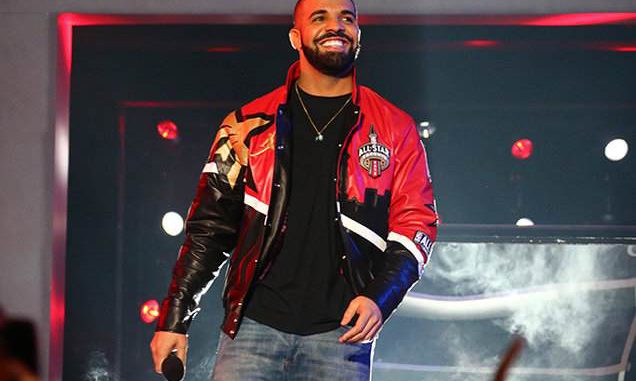
A funny thing happened to Spotify late last month. As part of the streaming service’s first-ever total artist takeover, visitors to the Browse homepage were greeted with a massive grid of Drake faces, on the cover of nearly every one of the page’s playlists. “Grime Shutdown,” “Fresh Gospel,” “Indie Party,” “Ambient Chill,” “Bachata” and, hilariously, “Best of British,” all categories that could be only tangentially tied to the artist, suddenly became Drake playlists, as part of a massive ad campaign for the rapper’s new album, “Scorpion.”
Spotify’s Drake-wallpapering job — the streaming service’s first-ever artist takeover — foreshadowed a record-breaking streaming week for the rapper. Despite the fact that “Scorpion” actually had a lower first-week equivalent sales total than his last full album, 2016’s “Views” (1.04 million for “Views” compared to 732,000 for “Scorpion”), Drake’s new album broke global first-week streaming records, becoming the fastest-ever album to reach one billion streams worldwide.
The album’s success steamrolled the criticisms of Spotify that emerged after Friday’s all-Drake takeover, with some users seeing it as an editorial overstep, comparable to U2’s infamous album-release debacle in 2014 in which Apple placed a copy of the band’s “Songs of Innocence” release in users’ iTunes libraries without warning or permission. Similarly, middling critical reviews of “Scorpion” — with the common complaint that it 25-song tracklist was bloated and overlong — clearly didn’t slow down the album’s snowballing streaming numbers. Drake’s music hasn’t been groundbreaking for a while, but what is groundbreaking about the release of “Scorpion” is the cynicism of the rapper’s formula, in which artists sacrifice quality for streamability and streaming services adopt editorial slants to benefit the highest bidders.
With 25 songs on “Scorpion,” Drake has doubled down on the release strategy that enabled his poorly reviewed 2016 album “Views” to nevertheless break virtually every streaming record at the time: an extra-long tracklist that includes all of his successful recent singles. Thanks to the Recording Industry Association of America’s streaming rules, which recently changed to factor streams into an album’s sales figures and gold/platinum certifications, that formula means that “Scorpion” was platinum-eligible before it was even released, and is well on its way to record-breaking numbers.
“Scorpion” is not a very good album, for the same reasons behind its success. The album’s 25 songs feel excessive, with neither Side A or Side B coming close to the quality of Drake’s golden-age releases “Take Care” (2011) or “Nothing Was the Same” (2013).
Drake’s cynical streaming strategy has beckoned plenty of other overstuffed pop and rap albums since the release of the 82-minute “Views,” with recent examples including Migos’ “Culture II” (105 minutes, 24 songs), Rae Sremmurd’s “SR3MM” (101 minutes, 27 songs), DJ Khaled’s “Grateful” (87 minutes, 23 songs), Eminem’s “Revival” (77 minutes, 19 songs), Lana Del Rey’s “Lust for Life” (72 minutes, 16 songs) and, longest of all, Chris Brown’s 45-song “Heartbreak on a Full Moon,” which was was certified gold in its first 10 days despite its lack of Top 40 singles.
With the exception of albums like Kendrick Lamar’s “To Pimp a Butterfly” (17 songs) and Solange’s “A Seat at the Table” (21 songs), featuring tracklists loosely united around themes that give the lengthy runtimes a purpose, the majority of pop albums with hour-plus runtimes could use editing. Yet, Drake has no incentive to make a quality album, given how much money he’s about to make with his 89-minute one. For listeners, if this trend toward overlong releases means subpar music from their favorite artists, well, too bad.
Of course, it was RIAA’s streaming rules that helped encourage artists to expand their new albums to the breaking point. And Spotify’s wall-to-wall promotion of “Scorpion” seemed to emphasize the gap between the Drake-level stars, who can drop enough money to rent out the streaming service’s homepage, and the smaller fish in the music industry pond, less-established artists who have seen their livelihoods destabilized by streaming’s notoriously low payouts.
Found on Spotify’s Browse page are the service’s most influential playlists, with an appearance on lists such as New Music Friday and RapCaviar capable of boosting a rising artist to stardom, and a slot in Today’s Top Hits worth $100,000+ in potential revenue. The symbolism of seeing Drake’s face splashed across those top playlists and more on the Browse page, including ones that didn’t even feature his music, made an unflattering statement about Spotify’s willingness to lend its front-page real estate to an ad campaign, and how democratic success in the streaming age actually is.

